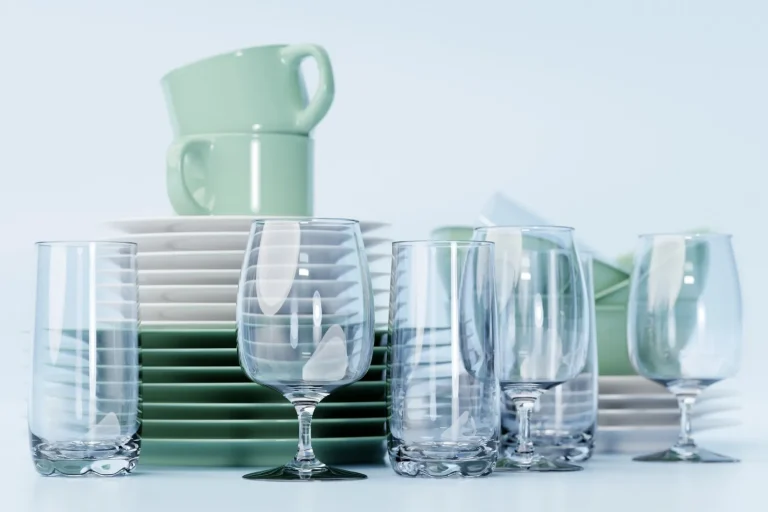GLASS & CERAMICS
We test, document and advise to ensure your products comply with applicable legal requirements.

Safety is crucial when glass and ceramics come into contact with food.
At FCMtesting ApS in Odder, close to Aarhus, we help you ensure that your glass and ceramic materials comply with applicable EU regulations and national legislation, so that you can safely bring your products to market.
At FCMtesting we offer:
- Migrationstest for at sikre, at jeres produkt ikke afgiver skadelige stoffer over de tilladte grænser.
- Declaration of Compliance according to EU regulations, so that your documentation is legally correct.
- Advice on applicable legal and documentation requirements so that you achieve full compliance.
- For produkter, der importeres fra lande uden for EU, kan vi også hjælpe jer med at gennemgå dokumentation eller sætte test.
What should you be aware of when glass and ceramics comes into contact with food?
Glass and ceramics are often used for packaging, serving and storing food. But not all products are automatically safe. Materials and surfaces can release unwanted substances, especially when in contact with acidic foods. At FCMtesting, we share the knowledge that makes it easier to make the right choices.
Ceramics – the glaze is crucial
The glaze is the outermost layer of ceramics and is typically in direct contact with food. Many potters develop their own glaze to achieve a special expression, but this can lead to the risk of releasing heavy metals such as lead and cadmium. If you mix the glaze yourself or add substances for color, shine or texture, you should have the product tested to see if it still complies with the limit values. We often see that handmade ceramics require migration tests to document safety.
Glass tinting requires attention
Glass does not have a glaze, but can be colored or decorated. If you use metallic oxides or pigments to color the glass, it can affect the material's suitability for food contact. Colored glass can release substances, especially when in contact with acidic liquids or when heated. We help you assess whether your coloring requires testing and how best to document the safety of the product.
What are you testing for?
Both glass and ceramics are typically tested for the release of lead and cadmium. If other heavy metals are suspected – for example, when mixing your own glaze – additional testing should be carried out. The test is carried out in acetic acid, which simulates contact with acidic foods, and shows whether the release is below the permitted limits.
Import – be aware of differences
Products from countries outside the EU may be manufactured with different materials and to different standards. This applies in particular to glazes and color pigments, which in some cases contain substances that are not permitted here. We help you review the documentation and set up relevant tests to avoid errors and achieve full compliance.
FIND MORE INFORMATION ABOUT GLASS AND CERAMIC PRODUCTS
What types of materials are there?
Material types – Glass and Ceramics
Glass:
- Soda-lime glass (standard household glass)
- Borosilicate glass (heat-resistant)
- Tempered glass
- Crystal glass / leaded glass
- Colored or decorated glass
Ceramics:
- Earthenware (porous, glazed)
- Stoneware (dense, durable)
- Porcelain
- Glazed ceramics
- Decorated ceramics
- Low-fired / raku ceramics (not food-safe)
Legislation and external references
Legislation and guidelines for glass and ceramics
Tip: Always use the latest legal text. Select "In force" and the latest consolidated version on EUR-Lex.
- Regulation (EC) No. 1935/2004: General requirements for all materials for food contact, including glass and ceramics.
- Regulation (EC) No. 2023/2006: Requirements for good manufacturing practice (GMP).
- Directive 84/500/EEC: Specific requirements for ceramics, including tests for lead and cadmium.
- Danish executive order: National requirements for documentation and labeling.
FAQ – Testing and documentation of glass and ceramics
FAQ – Testing and documentation of glass and ceramics
- What substances are tested in glass and ceramics for food contact?
- Primarily heavy metals such as lead (Pb) and cadmium (Cd). The test follows EU Directive 84/500/EEC and Danish regulations.
- How are glass and ceramics tested?
- The material is exposed to food simulants and the release of heavy metals is measured. The results are compared with limit values set in legislation.
- Is there a requirement for a Declaration of Compliance (DoC)?
- Yes. Manufacturers and importers must document compliance with limit values and testing requirements. See guide to DoC.
- Which products are covered?
- All glass and ceramic products intended for contact with food – e.g. plates, mugs, bowls, storage jars and baking tins. Decorative items that may come into contact with food are also covered.
